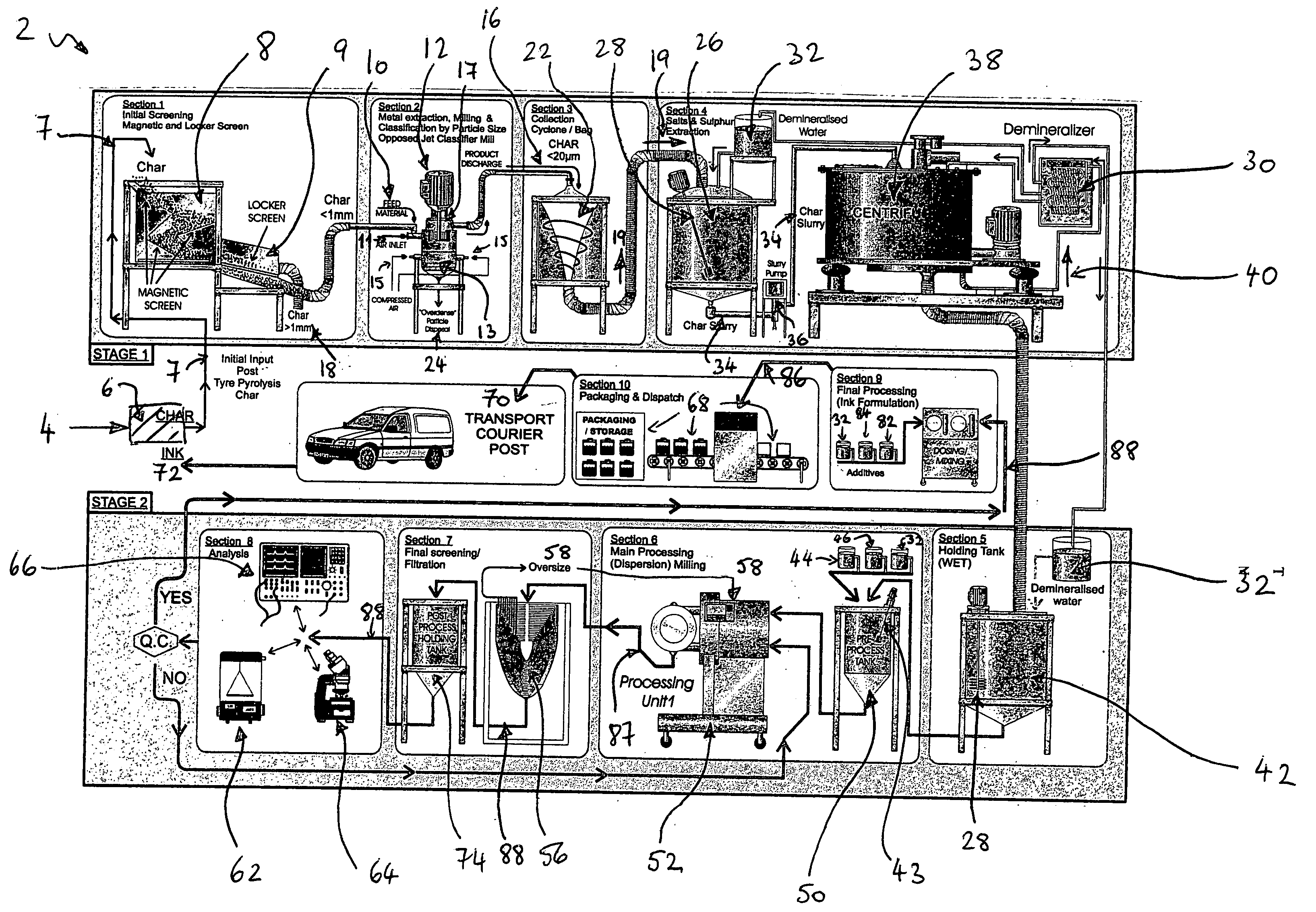Method of refining carbon black char
a carbon black char and carbon black technology, applied in the direction of pigmentation treatment, etc., can solve the problems of low carbon concentration, unsuitable for desk jet and ink jet printer inks, and many millions of tyre wear of passenger cars, etc., and achieve the effect of high purity
- Summary
- Abstract
- Description
- Claims
- Application Information
AI Technical Summary
Benefits of technology
Problems solved by technology
Method used
Image
Examples
Embodiment Construction
[0054] Referring to FIG. 1, there is shown a flow chart of a process 2 for refining impure carbonaceous char in to a dispersion, which can be used to produce ink jet printer ink, and toner. Waste tyres are initially fed 4 in to a pyrolysation unit 6 to produce impure carbon black char 7. The char 7 is then screened using a magnetic screen 8 and a locker screen 9 (section 1). The magnetic screen 8 removes ferrous material impurities 18 from the carbon char, and the locker screen 9 removes particles in the char which are greater than 1 mm in size.
[0055] The char particles are then further classified using an Opposed Jet Classifier Mill 12, which extracts smaller particles of metal, and grinds the char down such that the average particle size is no greater than 20 μm (section 2). The char particles are sucked under vacuum out of the Classifier mill 12 by a cyclone 22 (section 3), after which metallic salts and sulphur are extracted, followed by two cycles of dewatering to produce a ca...
PUM
| Property | Measurement | Unit |
|---|---|---|
| size | aaaaa | aaaaa |
| particle size | aaaaa | aaaaa |
| size | aaaaa | aaaaa |
Abstract
Description
Claims
Application Information
 Login to View More
Login to View More - R&D
- Intellectual Property
- Life Sciences
- Materials
- Tech Scout
- Unparalleled Data Quality
- Higher Quality Content
- 60% Fewer Hallucinations
Browse by: Latest US Patents, China's latest patents, Technical Efficacy Thesaurus, Application Domain, Technology Topic, Popular Technical Reports.
© 2025 PatSnap. All rights reserved.Legal|Privacy policy|Modern Slavery Act Transparency Statement|Sitemap|About US| Contact US: help@patsnap.com


